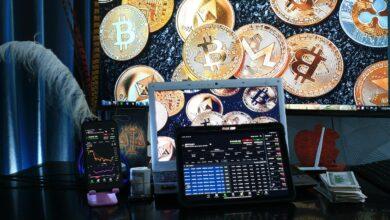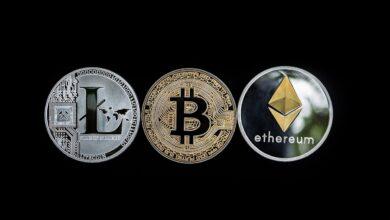Mastering Market Depth for Smart Exchange Choices

In the intricate world of financial markets, the concept of market depth emerges as a critical pillar for those engaged in trading activities. To grasp the nuances of market depth is to understand the very fabric of price formation and liquidity within exchanges. This understanding is not merely academic; it bears profound implications for decision-making processes when selecting an exchange. The relevance of market depth extends beyond superficial metrics, inviting traders to delve deeper into the mechanics that govern their trading environment.
As we embark on analyzing market depth, it becomes evident that its significance lies in its ability to illustrate the available liquidity at various price levels. When choosing an exchange, traders must comprehend how market depth can influence their trading strategies and outcomes. A robust market depth indicates a healthier exchange ecosystem, characterized by substantial buy and sell orders that facilitate smoother transactions and minimize slippage. Thus, the importance of evaluating market depth cannot be overstated–it serves as a barometer for assessing the viability and reliability of an exchange.
Moreover, comprehending market depth allows traders to make informed decisions that align with their individual trading goals. It equips them with insights into potential price movements and aids in anticipating market reactions to large orders. In the realm of cryptocurrency, where volatility reigns supreme, such comprehension becomes indispensable. As we explore the intricacies of market depth further, we will illuminate its role in selection criteria for exchanges and how it empowers traders to navigate this dynamic landscape with confidence and strategic foresight.
Understanding Market Depth and Its Importance in Exchange Selection
In the intricate realm of financial trading, especially within the volatile sphere of cryptocurrencies, market depth emerges as a crucial metric for evaluating potential exchanges. Market depth refers to the market’s ability to sustain larger orders without significantly affecting the price of an asset. This concept is essential for traders who seek to execute substantial transactions efficiently. Grasping market depth allows investors to make informed decisions based on the liquidity available in various exchanges, which ultimately influences their trading strategies and risk management approaches.
Analyzing market depth involves examining the order book of an exchange–essentially a ledger that lists buy and sell orders at different price levels. A deeper market, characterized by a greater number of buy and sell orders, reflects higher liquidity and generally indicates that an exchange can absorb large trades with minimal price slippage. In contrast, shallow markets may lead to significant price fluctuations when sizable trades are executed. Therefore, comprehending this aspect is paramount for traders aiming to mitigate risks associated with sudden market movements.
The relevance of market depth in decision-making cannot be overstated. For instance, a trader looking to enter or exit a position must consider not only the current price but also how much liquidity exists at that price level. An exchange with robust market depth offers more favorable conditions for executing trades without causing drastic price changes. Thus, understanding market depth becomes an integral part of selecting an exchange that aligns with one’s trading objectives.
When choosing exchanges, one must weigh the significance of market depth alongside other factors such as security, fees, and user experience. However, prioritizing exchanges with strong market depth ensures that traders have access to a reliable trading environment. By focusing on this aspect, they can avoid potential pitfalls associated with low liquidity, such as increased volatility and slippage during transactions.
Moreover, the role of market depth extends beyond individual trading decisions; it also impacts overall market stability. Exchanges with deep markets contribute to healthier price discovery mechanisms and reduce the likelihood of manipulation. Therefore, when analyzing different platforms for their suitability, traders should prioritize those exhibiting robust market depth as part of their comprehensive evaluation strategy.
In conclusion, understanding market depth serves as a cornerstone for effective exchange selection in today’s fast-paced trading landscape. By grasping its importance and relevance in decision-making processes, traders can enhance their proficiency and make well-informed choices that align with their financial goals. Fostering a keen awareness of market dynamics enables participants not only to navigate the complexities of cryptocurrency trading but also to thrive within this ever-evolving ecosystem.
Understanding Market Depth and Its Importance in Exchange Selection
Market depth is a crucial concept in the realm of financial exchanges, particularly within the cryptocurrency landscape. It refers to the market’s ability to sustain large orders without significantly impacting the price of an asset. The market depth chart displays the buy and sell orders at various price levels, thus providing insight into the supply and demand dynamics. A comprehensive understanding of market depth not only aids traders in making informed decisions but also plays a significant role in exchange selection. Recognizing the nuances of market depth can lead to more strategic trading practices and enhance overall profitability.
Grasping market depth is essential for decision-making when choosing an exchange. In a thriving market environment, exchanges with greater depth typically exhibit lower volatility and tighter spreads, which are critical factors for traders seeking efficiency. When liquidity is abundant, traders can execute their orders without incurring excessive slippage, which occurs when an order is filled at a less favorable price than intended. Thus, comprehending the importance of market depth enables traders to identify exchanges that align with their trading strategies and risk tolerance.
The significance of market depth extends beyond mere liquidity; it encompasses the overall health and stability of a trading platform. Analyzing market depth provides insights into potential price manipulation or erratic trading behavior that may arise from thinly traded assets. Exchanges with shallow market depth may be more susceptible to drastic price swings triggered by large trades, posing risks for traders who may find themselves trapped in unfavorable positions. Therefore, assessing market depth is integral to ensuring a safe trading environment and mitigating unforeseen risks.
In the context of exchange selection, comprehending market depth allows traders to make more calculated decisions regarding where to trade. A deep market generally signifies a robust user base and active participation, which are indicators of reliability and trustworthiness in an exchange. On the other hand, exchanges with limited market depth might indicate low user engagement or lackluster liquidity, raising red flags for potential investors. By analyzing these factors, traders can prioritize exchanges that foster a conducive trading atmosphere.
Moreover, the relevance of market depth cannot be overstated when it comes to developing effective trading strategies. For instance, high-frequency traders often rely on real-time data regarding market depth to execute trades rapidly while capitalizing on minute price fluctuations. In this light, understanding the intricacies of market depth becomes paramount not only for individual traders but also for institutional players looking to optimize their trading performance.
Ultimately, the decision-making process surrounding exchange selection hinges on a thorough analysis of market depth. As traders endeavor to navigate an increasingly complex financial landscape, the comprehension of market dynamics–including supply and demand reflections–is pivotal. By prioritizing exchanges with superior market depth, traders can enhance their decision-making capabilities and foster greater success in their trading endeavors.
The Importance of Market Depth in Trading
In the intricate world of trading, understanding market depth is not merely an academic exercise; it is a fundamental necessity for any would-be trader. Market depth refers to the market’s ability to sustain large orders without significantly impacting the price of an asset. This concept plays a pivotal role in decision-making processes when choosing exchanges. A robust market depth indicates that an exchange can accommodate substantial buy and sell orders, a trait that is especially vital during volatile trading periods when liquidity is paramount.
Grasping the nuances of market depth allows traders to assess the significance of order book dynamics. When analyzing market depth, one should consider both the volume of orders at various price levels and the spread between the highest bids and lowest asks. A narrow spread often signals a healthy market with ample liquidity, making such exchanges preferable for traders looking to execute large transactions efficiently. Conversely, wide spreads can indicate potential challenges in executing trades without incurring excessive slippage, thereby influencing exchange selection dramatically.
The comprehension of market depth also extends to its relevance in risk management strategies. For traders who engage in high-frequency or algorithmic trading, understanding how market depth fluctuates can provide critical insights into execution strategies. Traders must consider how quickly they can enter and exit positions without adversely affecting their intended price points. Thus, an exchange’s market depth becomes a vital criterion in determining where to trade, as it directly correlates with potential profitability and overall trading effectiveness.
Ultimately, analyzing market depth equips traders with the tools necessary for informed decision-making regarding exchange selection. By prioritizing exchanges that exhibit strong market depth characteristics, traders enhance their capacity to navigate the complex terrain of financial markets effectively. This analytical approach not only fosters better trading outcomes but also encourages a deeper appreciation for the mechanisms that underpin modern exchanges. In an environment driven by rapid changes and technological advancements, the importance of comprehending market depth cannot be overstated–it is an essential element in the arsenal of any serious trader.
Conclusion: The Significance of Market Depth in Exchange Selection
In the vast, pulsating ecosystem of cryptocurrency exchanges, the importance of market depth cannot be overstated. As we have traversed the intricacies of analyzing market depth, we have uncovered not just numerical representations but a deeper comprehension of what these figures signify for decision-making. Understanding market depth is akin to peering into the soul of an exchange; it reveals the liquidity and stability that underpin trading dynamics. It is this very understanding that empowers traders to make informed choices when selecting an exchange.
The relevance of market depth in choosing exchanges serves as a guiding light for both novice and seasoned traders alike. By grasping the nuances involved, one can appreciate how market depth influences not only trade execution but also the overall user experience. Exchanges with robust market depth offer a sanctuary where trades can be executed seamlessly, without the lurking fear of slippage or price manipulation. Thus, in our endeavor of comprehending the significance of market depth, we unveil its role as a decisive factor in exchange selection.
- Liquidity: High market depth often correlates with increased liquidity, allowing for efficient trading.
- Price Stability: A well-structured order book can help maintain price integrity amidst volatile fluctuations.
- User Confidence: Traders are more likely to trust exchanges that demonstrate substantial market depth.
- Execution Speed: Greater depth usually translates to quicker order fulfillment, enhancing the trading experience.
In conclusion, grasping and analyzing market depth is not merely a technical exercise; it is an essential practice for anyone engaged in cryptocurrency trading. The significance of this understanding lies in its capacity to foster sound decision-making processes, ensuring that traders choose exchanges that align with their strategies and risk tolerance. By prioritizing market depth in exchange selection, one embarks on a journey not just towards profitability but towards a more profound connection with the vibrant world of digital assets.





